Great-crested GrebesMonday, 5th April 2004 |
|
|
|
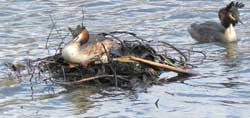
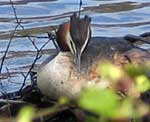 When
you see a pair together it's obvious that the male has the larger crest
and ruff. Grebes were hunted almost to extinction in Britain when their
plumage became a fashion accessory for Victorian women. It wasn't the
extravagent head plumes that were the attraction but the dense, downy
feathers of the breast.
When
you see a pair together it's obvious that the male has the larger crest
and ruff. Grebes were hunted almost to extinction in Britain when their
plumage became a fashion accessory for Victorian women. It wasn't the
extravagent head plumes that were the attraction but the dense, downy
feathers of the breast.
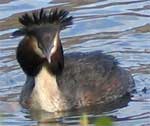
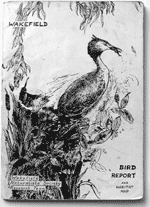 Grebes
were still in the process of making a recovery in the late 1960s when
I joined our local naturalists' society. The Aire and Calder valleys with
their mining subsidence lagoons and flooded gravel workings had become
a stronghold for the species.
Grebes
were still in the process of making a recovery in the late 1960s when
I joined our local naturalists' society. The Aire and Calder valleys with
their mining subsidence lagoons and flooded gravel workings had become
a stronghold for the species.
I drew the a grebe for the cover of the 1972 Wakefield Bird Report, which, as far as I know, was the first since Victorian times. This was my first published book cover. I later produced a grebe anorak badge for the society which, luckily, that was about it as far as my career as a fashion designer went. I have to admit that 'designer anorak' is still the look I go for.
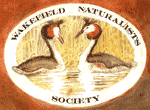
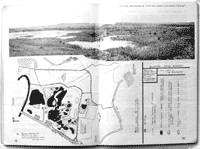
Richard Brook, still our Conservation Officer 32 years later, used this panoramic shot, taken in May 1972, of a wild looking wetland as the centre spread of the report.
He quotes a planner as describing the site as 'a bit of an eyesore that
needed tidying up'. It has been: the 'eyesore' is now Pugneys
Country Park, complete with windsurfers, miniature railway and,
on the reserve lake which now occupies the far right corner of the panorama,
you're still likely to see great-crested grebes at any time of year. ![]()
Richard Bell, richard@willowisland.co.uk